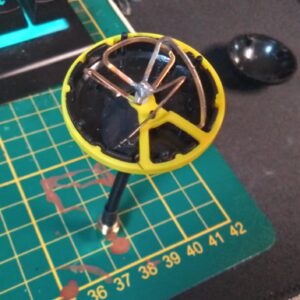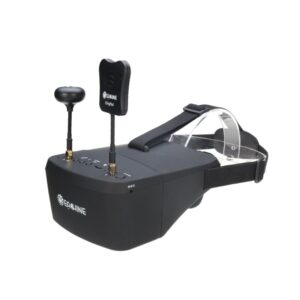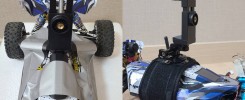When we see a drone pilot, some can’t help but notice why there are so many different types of antennas sticking out from their FPV goggles. Some are mushroom-like while others look like a piece of bread. Those antennas are different and they perform differently. Let’s find out the what and how.
Linear Antenna
As its name implies, linear antennas are straight antennas. They look like a stick or a pole. They are the most common antenna that you mostly see everywhere – from your WiFi router to your RC car receiver. These antennas are linearly polarized (also called vertically polarized) which means their electric field is perpendicular to the Earth’s surface. A good example of a vertical antenna is a broadcast tower for FM radio.
These vertical antennas are not necessarily positioned straight up toward the sky although that helps in getting better reception. Some are placed at an angle such as on top of your real-size car.
Their polarization can either be vertical or horizontal. When vertically polarized, the electric field is perpendicular to the Earth’s surface. In horizontal polarization, their electric field is parallel to the ground.
Circular Antenna
Circular antennas are those that resemble mushrooms (with cover on) or clover (without cover on). Some even look like lollipops. They are gaining popularity thanks to the growing drone industry which explains the reason why. Circular antennas emit and receive signals in a circular corkscrew pattern. This behavior makes it ideal to be used when the object you are communicating with could be at any location from you, just like a flying drone or an RC car.
Circular polarization can also provide better reception in certain situations, such as when the antenna is moving or when there are objects that could block your signal.
Circular antennas get more complicated when there are split into two categories – right-hand circular polarized (RHCP) and left-hand circular polarized (LHCP). For right-hand, the signal propagates on a clockwise rotation while a counterclockwise rotation refers to left-hand circular polarization.

Identifying the polarization of a circular antenna is straightforward. By visually examining its shape, you can determine its handedness. For instance, if you observe the circular wire pattern above, it looks like four clover leaves (one leaf is slightly hidden from view) where each leaf has a long outer edge. If this edge curls upward in a counterclockwise direction, it is right-hand polarized – just like when you curl your fingers on your right hand.
Most circular antennas are right-hand circular polarized (RHCP)
Linear Vs. Circular Antenna – See The Difference
The video below depicts the stark difference between linear and circular antennas. The test was performed with Wltoys 124017 RC car moving at an average of 28 km/h on the same track with the driver positioned at the same location with FPV goggles. The circular variant does seem to offer much better video quality compared to the linear option.
Use The Same Polarization At Both Ends To Maximize Reception
Whether you decide to use linear or circular antennas, ensure that you’re using the same polarization when transmitting and receiving. This includes the right-hand and left-hand circular polarization. For example, if you’re using a right-hand polarized circular antenna on your RC car for video transmission, you want to use the same right-hand variant on your video receiver or FPV goggles.
Ensure Your FPV Goggles or Video Receiver is Compatible With Your Choice of Antenna
Goggles come in different types and shapes and most these days support linear or circular antennas. These are the two antennas sticking out from the headset that look like insect antennas.
The common ones you will find are mushroom or clover-shaped which are circular and patch antennas. Do note that patch antennas could be linearly or circularly polarized so please check the manufacturer’s specifications. If your goggles already have a circular antenna, then the patch type should be linear.

Circular antennas are best for receiving signals from any direction while patch is for directional purposes. It’s wise to keep the flat side of the patch facing forward to ensure the goggles can capture the most signal when your RC car is right in front of you.
Some offer a diversity feature where their headset can automatically switch between the two antennas. It will switch to the one that gives the best signal.

